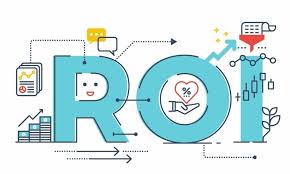In the competitive landscape of real estate development, achieving a high return on investment (ROI) is both an art and a science. More reason, developers, investors, and businessmen are constantly seeking strategies to optimize profitability, reduce risks, and ensure long-term success. As we cannot prevent the fluctuation in market conditions, a well-planned approach rooted in practical strategies can significantly enhance your project’s financial outcomes. This article examines key strategies to optimize ROI in real estate development, providing actionable insights to enhance your next venture or investment. You need to understand ROI in Real Estate Development

ROI, or return on investment, is a term used to describe the measurement of the profitability of a project relative to its cost. In real estate, it encompasses rental income, capital appreciation, and other value-added benefits. For instance, taking Ile Aje as a case study, buying it now for 16 million and planning to resell it when the property is fully built is proposed to attract an addition of 14 percent on the value of the property. Which means, you would earn even more than you paid for the property- that is your return on the investment. Maximizing ROI is vital for sustaining growth, attracting investors, and maintaining competitiveness. However, challenges such as rising construction costs, regulatory hurdles, and market fluctuations demand strategic planning and execution.

What, then, is strategic planning in Real estate Development?
Strategic Project Planning and Design
A successful project begins with meticulous planning. You should conduct comprehensive market research to identify demand trends and preferences. Thoughtful site selection and optimal land use can significantly influence profitability. Ile Aje, a modern trade plaza developed by Casafina Development, for example, is located in Ojota, a trade hub with a large amount of foot traffic. Also, designing flexible layouts that accommodate future growth or changes in market demand ensures sustained value. Most importantly, prioritize creating appealing, functional spaces that resonate with target buyers or tenants, ultimately enhancing sales and occupancy rates.
Cost Control and Budget Management
Controlling costs without sacrificing quality is crucial. Implementing detailed cost estimation early in the process and monitoring expenses diligently throughout construction will help you. Effective negotiation with suppliers and contractors to secure favorable terms is advisable, too. You would need to employ value engineering techniques to identify cost-saving opportunities while maintaining design integrity. Remember, reducing waste and avoiding scope creep can substantially improve your project’s bottom line.
Efficient Project Management
Timely project completion minimizes holding costs and accelerates revenue generation. If you streamline workflows by adopting project management software, it will foster clear communication among stakeholders. As much as we try to avoid them, you should also anticipate potential delays, it could be supply chain disruptions or permitting issues, it will be of advantage to develop contingency plans. An organized, proactive approach keeps your project on schedule and within budget, directly boosting ROI.
Innovative Financing and Investment Strategies
Diversify your funding sources to optimize cash flow and reduce financial risk. Structured deals, joint ventures, or phased investments can align interests and improve project financing conditions. Building strong relationships with financial institutions and investors provides access to favorable financing options, reducing costs and increasing profitability.
Effective marketing can significantly impact your project’s financial success. You’d need to develop a compelling value proposition tailored to your target audience. Leverage digital marketing platforms, social media, and branding to generate buzz early on. Sometimes, even pre-selling units or securing commitments before project completion can be a strategic action.
Conversely, projects that overlooked cost controls or market positioning experienced delays and reduced profitability. Learning from these examples underscores the importance of a holistic approach.
In conclusion, maximizing ROI in real estate development requires a comprehensive, strategic mindset coupled with balanced innovative and creative design, rigorous cost control, efficient management, and targeted marketing. By adopting these practical strategies, developers and investors can enhance profitability, mitigate risks, and position their projects for sustained success.
